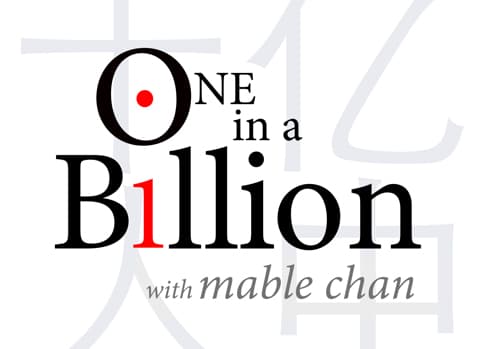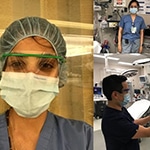The history and physical examination, we were taught in medical school, is among the most intimate of human encounters. Active listening, attention to facial expressions, and human touch, we learned, are integral to establishing trust, rapport, and a diagnosis. They are integral to the art of medicine.
As the coronavirus surge began, we suddenly had to enact this intimate human encounter from a distance.
In the emergency department, we as physicians had to limit our physical interactions with patients and their family members. We waved hello to our patients from doorways or curtains and pointed to phones or iPads at their bedside, then spoke with them from a workstation fifteen feet away. Patients could no longer be accompanied by visitors; we never met their family members face to face, even as we updated them by phone. This was how we practiced social distancing within the hospital. Spending less time at the bedside reduced our exposure to patients with coronavirus, and it limited our patients’ exposure to us—potential carriers, regardless of whether we were asymptomatic, sanitizing our hands constantly, or protected underneath our yellow gowns and turquoise respirators.
Suddenly, the art of medicine became more complicated. It was harder to establish human connections with patients. It was harder to gauge family members’ emotions when we told them what we thought was going to happen and deliver bad news.
For the last several months, I have been struggling with the art of this new medicine. Yet there have been simple and gracious moments that remind me that our heart remains strong.
Months ago, a patient arrived in the emergency department in a wheelchair, so ashen that I knew I could not interview him by phone. He told me in labored bursts of two to three words that he was a frontline health care worker. He had been feeling short of breath for days. As I put the oxygen probe on his finger, a bright blue number appeared onto the screen and an alarm started beeping, indicating a dangerously low level. Even giving him oxygen at the highest rate through a face mask did not bring his oxygen to a normal level. He was breathing fifty times a minute through pursed lips. “Sir,” I said, “We are going to have to put in a breathing tube and place you on the ventilator.” I registered the anxiety in his eyes. “Do you have a family member you want to call before we give you medications to make you sleep?”
I fished his phone out of his bag and placed it in his hands. He dialed a family member’s phone number and got a busy signal, twice. He stared at the phone. My eyes flickered to the monitor, ever aware of his low oxygen level. If it stayed that low, his heart would stop. We didn’t have much time for him to try again.
“I’m going to help you make a video,” I told him. My hospital’s palliative care group had been encouraging clinicians to help patients record their thoughts before being intubated, as patients sometimes remain connected to ventilators for weeks as they convalesce. It’s a long time for a loved one to go without hearing from them. I flipped the camera into selfie mode and held it in front of the patient. He addressed his family in his native language, speaking breathlessly for about thirty seconds, and ending with what I understood to be a blessing. I held back tears as I ended the recording and took a deep breath myself, preparing to give him the sedating medications and connect him to the ventilator.
For months afterwards, I thought about him. I thought about every patient I placed on a ventilator. I followed along during their hospitalizations, dismayed by the ones who died, and thankful for the ones who lived. I was relieved to see that he was one of the fortunate who made it out of the intensive care unit, and then out of the hospital alive.
Weeks later, our hospital announced that the surge was over: the number of cases had consistently been decreasing. It took some time to come to terms with that reality. And when it finally felt like we had a new normal, when daily clinical practice was no longer patient after patient with COVID, I saw his name appear on the emergency department trackboard as a newly registered patient.
When I stepped in to introduce myself, he didn’t recognize me. How could he, in my mask, goggles, and gown? He hadn’t seen my face the first time we met, and he wouldn’t see it in the emergency department that day. Assuming I knew little about his medical history, he told me about surviving COVID and relayed that he had been doing quite well since his discharge from the hospital. He had come in for a simple medical issue not related to COVID that day. As I examined him, I mentioned to him that I remembered him and had seen him the day that he had been admitted to the hospital with COVID. As I recounted the details of our conversation and making the video, I felt the smile warm over his face, underneath his mask. He seemed as happy to know it was me as I was to know it was him. We both basked briefly in that human connection.
We are not near the end of the pandemic. Many of us continue to struggle to forge social connections and humanism in this isolating time, both in life outside the hospital and within it. I am grateful for the moments in medicine that give me pause and give me hope.


